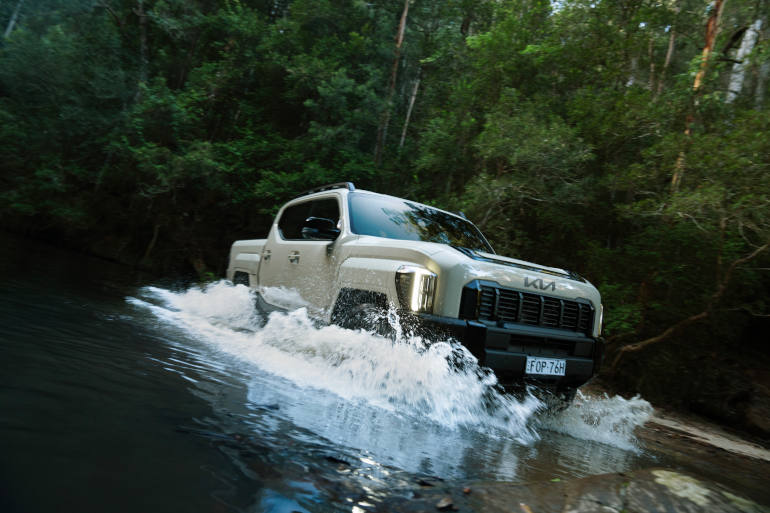Kia has officially opened pre-orders for its long-awaited Tasman ute, and transport operators finally have the details they’ve been waiting for. With pricing now confirmed and deliveries set to begin from July 2025, the Kia Tasman is shaping up as a serious new player in the Australian dual cab market—backed by a 100% diesel lineup, strong towing credentials, and a pricing structure that undercuts many of its competitors.
What makes the Tasman particularly interesting for transport and logistics operators is Kia’s commitment to commercial-grade practicality. This isn’t a lifestyle ute masquerading as a work vehicle. From the entry-level S variant through to the off-road-ready X-Pro, every model is built on a new ladder-frame chassis and powered by a 2.2-litre turbo-diesel engine delivering 154kW and 440Nm through an eight-speed automatic transmission.
A Line-up Designed for Work
The Dual Cab Pick-Up range starts with the S 4×2 at just $42,990 RRP, a highly competitive price for a vehicle with over 1,000kg payload capacity and a 3,500kg braked towing limit. For operators with vehicle policies that require payloads under one tonne—such as novated lease arrangements—Kia offers reduced payload variants across all models.
For those needing off-road ability or more rugged capability, the S 4×4 steps in at $49,990, followed by the SX 4×4 at $54,490, which adds features like Terrain Modes (Snow, Sand, Mud), navigation-based cruise control, and Highway Driving Assist 2.
The SX+ at $62,390 brings more creature comforts such as a bedliner, 240V power outlets (in both the tub and cabin), wireless phone charging, and dual-zone climate control. For transport operators who need a dual-purpose vehicle that transitions between depot duty and executive use, the X-Line 4×4 at $67,990 and X-Pro 4×4 at $74,990 introduce segment-first features like reclining rear seats, dual wireless charging, off-road display pages, and premium Harman Kardon sound systems.
Payload and Tow Ratings
Every variant in the range, including the flagship X-Pro, boasts a minimum payload rating of 1,013kg—with the Single Cab Chassis expected to offer up to 1,124kg once released. Towing capacity across the board is rated at 3,500kg braked (750kg unbraked), and all variants include an Integrated Trailer Brake Controller (ITBC) as standard. This integrates seamlessly with the Towing Mode and Trailer Sway Control to improve stability under load.
The Gross Vehicle Mass (GVM) is fixed at 3,250kg for all models, contributing to a Gross Combination Mass (GCM) of 6,200kg—figures that place the Tasman squarely in the conversation with heavy hitters like the Ford Ranger and Isuzu D-MAX.
Chassis and Body Options
The initial launch in July will feature only the Dual Cab Pick-Up, but Kia has confirmed that a Dual Cab Chassis will follow within a month, with Single Cab Chassis configurations due by the end of 2025. These variants are particularly important for transport fleets that rely on custom tray and tool body builds.
The tub of the Dual Cab Pick-Up is no afterthought either. It can accommodate an Australian pallet, offering 1,173L of cargo volume, and includes practical touches like rear bumper steps, lift-assist tailgates, and 240V outlets on higher trims.
Final Word for Operators
For transport operators looking to expand or update their ute fleet, the Kia Tasman delivers a compelling alternative—especially for those focused on cost-per-kilometre, diesel compatibility, and long-term towing reliability.
Backed by Kia’s growing commercial support network and a national marketing campaign tied to its NRL sponsorship, the Tasman offers a no-nonsense ute solution priced for business but engineered for performance. Keep an eye on the chassis cab releases—they’ll be the next big step in Kia’s serious play for the transport sector.







